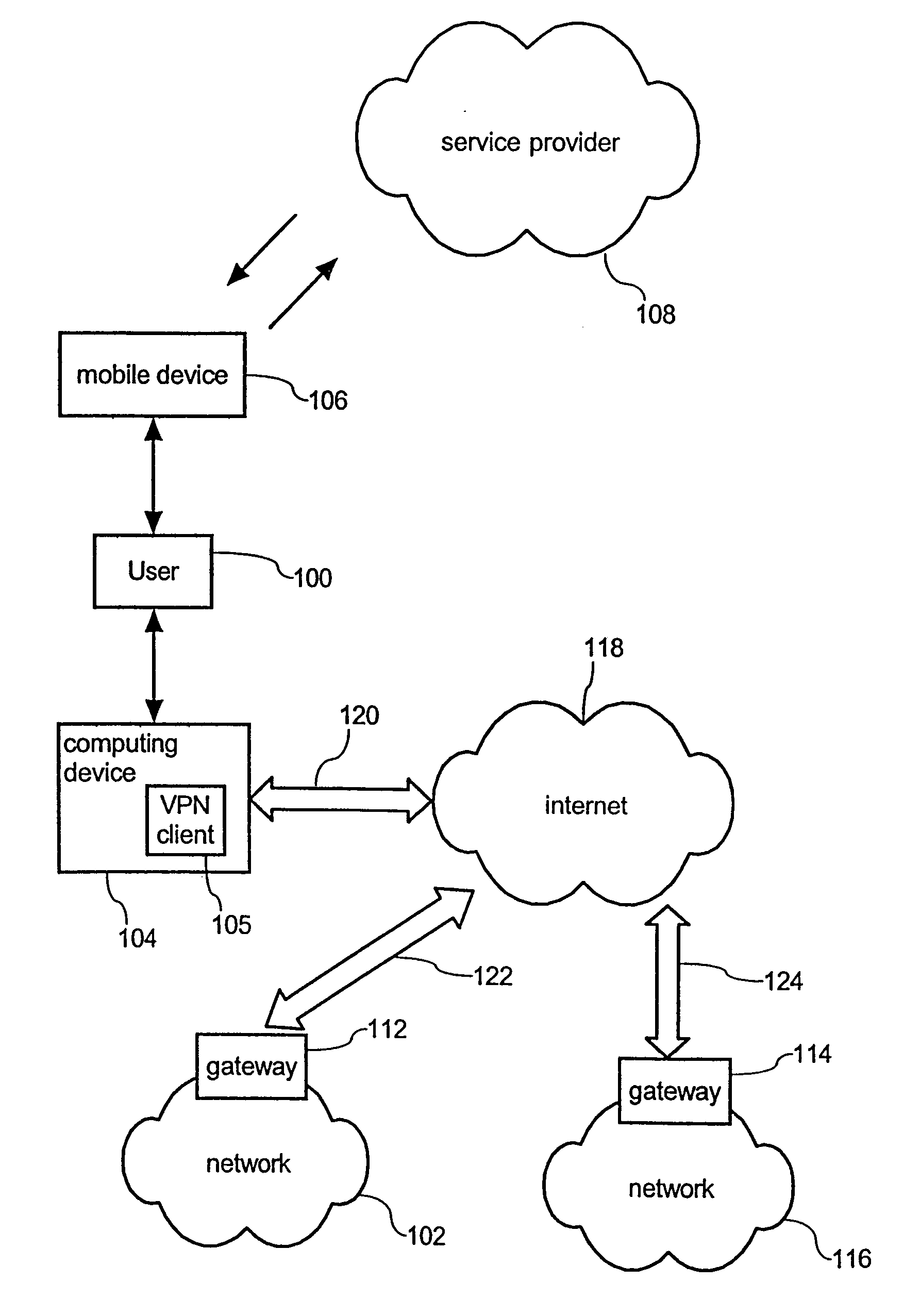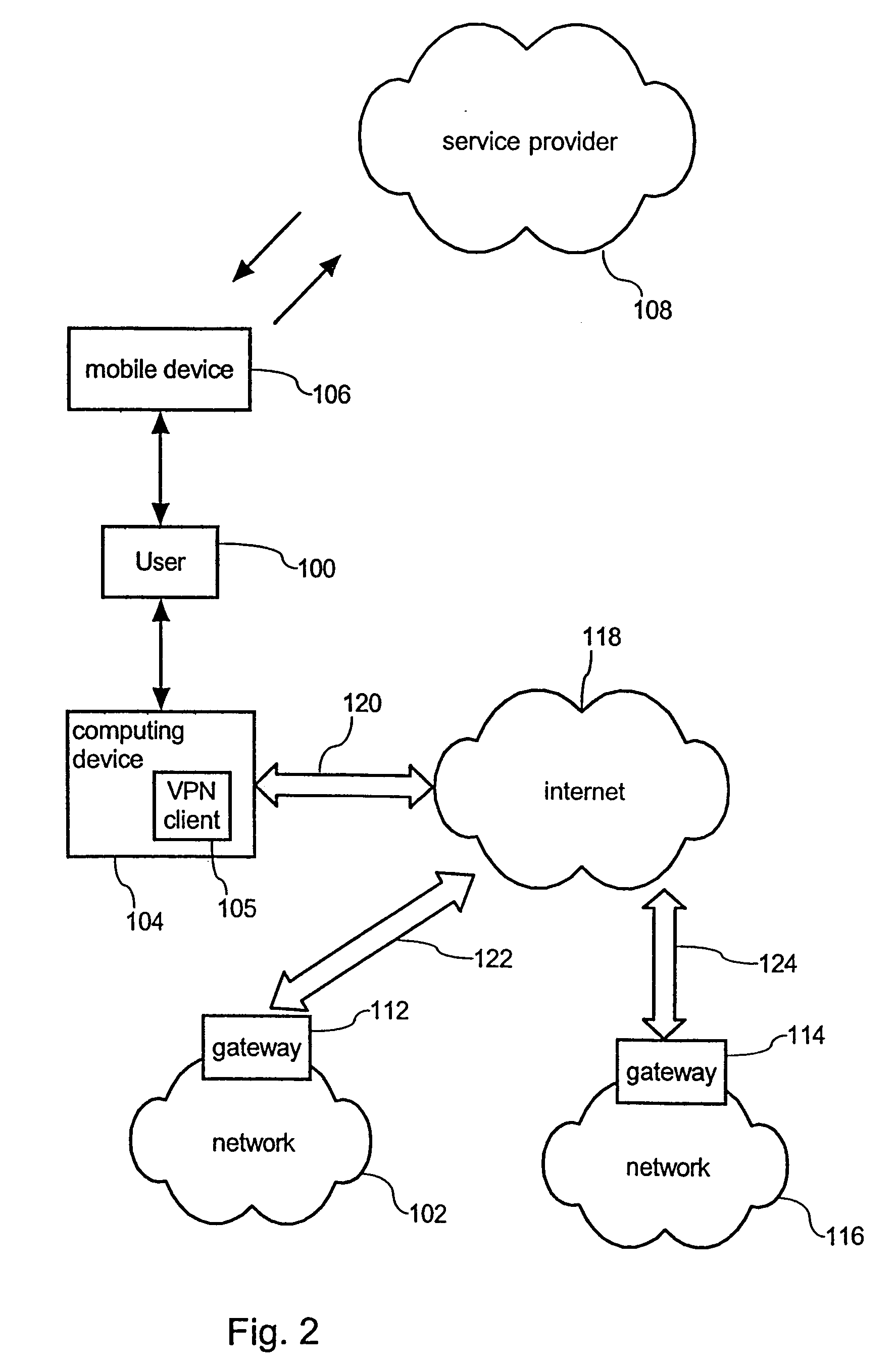[0016] The inventive method can be implemented into existing mobile communication networks by expanding the capabilities of a telecommunication provider. Hence, the telecommunication provider has to administrate a
user authentication database providing information whether a specific user is authorized to access a distinct network. Moreover, the
user authentication database may further specify various levels of
authentication and various levels of access rights of a user of a network.
[0018] In this way, a user is effectively enabled to authenticate and to establish a VPN connection to e.g. a corporate network without carrying along a network specific hardware Token. Hence, the entire functionality of a hardware Token as it is known in the prior art, is effectively replaced by installing a corresponding service by means of a service provider that is accessible via a
mobile phone of the user. Advantageously, the user has no longer to carry along an additional hardware device that only serves to provide a temporary password for authenticating to a VPN network. In this way, a user may also authenticate to a plurality of different networks by making use of his mobile telecommunication device.
[0020] According to a further preferred embodiment of the invention, requesting of the temporary password from the service provider further comprises authenticating the user to the service provider. When for example the service provider is implemented as a mobile communication provider, for accessing services of the mobile communication provider the user has to make use of an appropriate card, like a
subscriber identity module (SIM) card in combination with a corresponding
personal identification number (PIN). Once being authorised to access the services of the telecommunication provider, requesting of the temporary password for authenticating to the VPN network may further require an additional authentication step that might be implemented by entering an additional PIN. In this way, an additional
protection mechanism for receiving of the temporary password is effectively implemented.
[0024] Since the access request is further indicative of an identifier of the network, sufficient information for generating the temporary password is therefore given to the service provider. The user
authorization database that is administered by the service provider provides required information whether a specific user is authorized to access a distinct network. In this way, the access request can be sufficiently checked on the basis of the
user authentication database. The user authentication database therefore effectively allows to assert or to deny an access request and hence to enable or to disable generation and
transmittance of a temporary password to the user.
[0025] According to a further preferred embodiment of the invention, the temporary password can also be transferred from the mobile telecommunication device to the computing device on the basis of a
communication interface and a corresponding communication protocol. In this way, a temporary one-time password that is received by the mobile telecommunication device does not have to be explicitly read by the user and successively manually entered into the computing device by the user. By providing both the mobile telecommunication device and the computing device with a respective
communication interface, the temporary one-time password can be automatically transferred from the mobile telecommunication device to the computing device in response to receive the temporary password from the service provider. In this way, the user may only have to confirm entering of the provided password.
[0029] A conceivable, particularly low cost embodiment of the mobile telecommunication device can be implemented by making use of a commercially available cellular phone providing a programmable functionality. In this way, a specific
software application can be installed on the existing cellular phone that allows for selecting a dedicated menu item on the cellular phone that is adapted for transmitting the access request to the service provider. In this way the inventive method of authentication can be universally realized from a user's point of view by installing an appropriate
software application on his programmable cellular phone. Such
software applications might be provided in form of
Java applications or
Java applets that may be supported by the telecommunication or service provider. This feature makes the inventive
authentication scheme universally applicable to a wide range of users.
 Login to View More
Login to View More  Login to View More
Login to View More 


